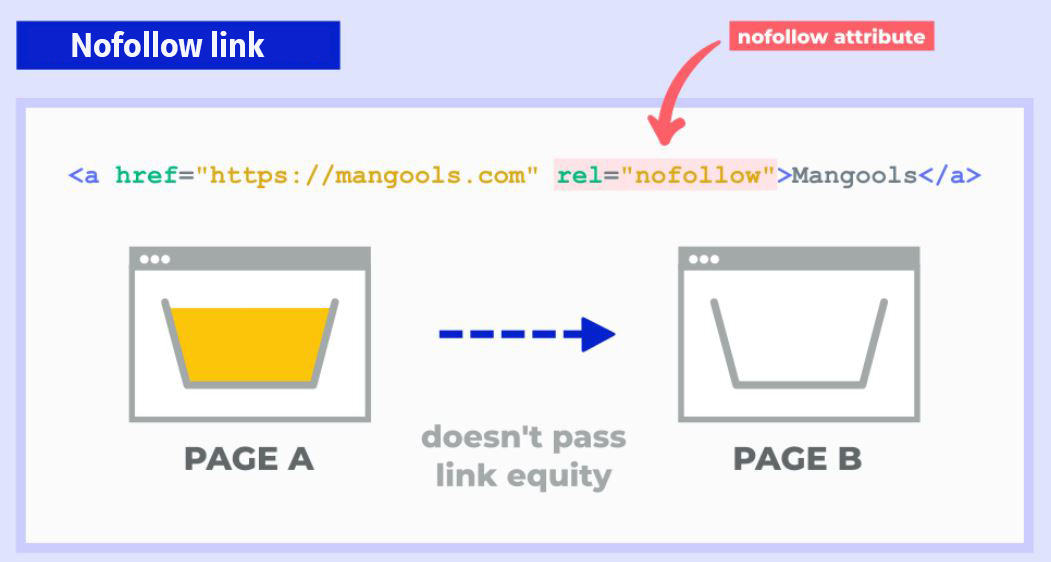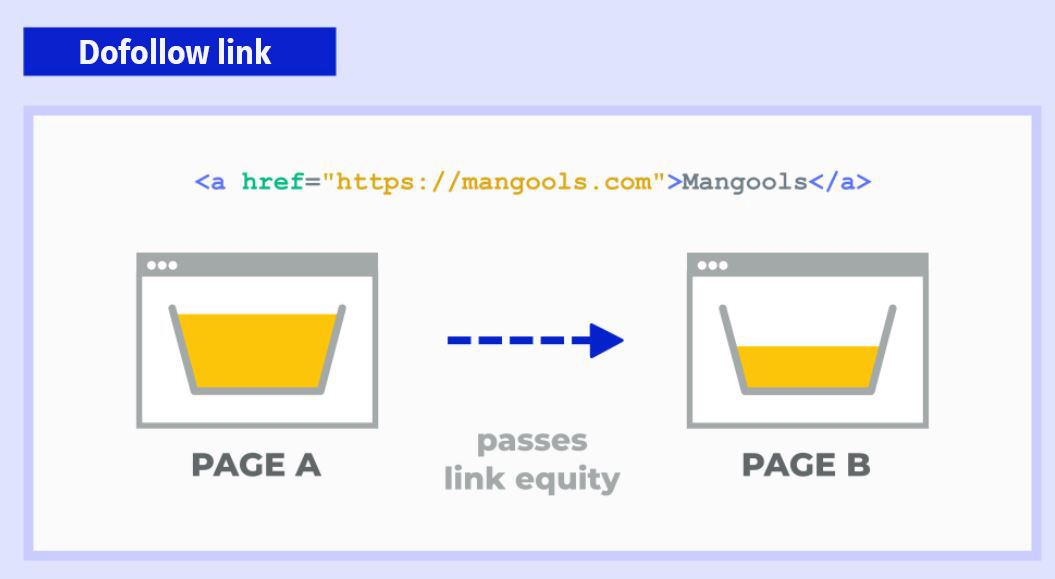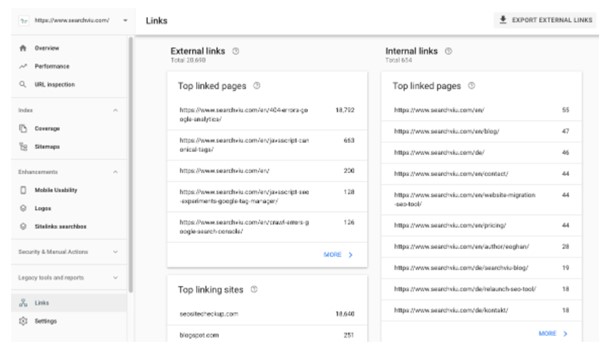Are you ready to increase the number of backlinks to your website? Backlinks play a pivotal part in your SEO strategy. In this LOCALiQ blog, we’ll explain what backlinks are, how they work, and show you how to get backlinks using 8 quick and simple strategies.
In this blog we’ll cover:
- What are backlinks?
- How do backlinks work?
- How backlinks improve SEO
- Types of backlinks
- What makes a good backlink?
- Checking backlink quality
- How to get backlinks
- 8 link building tips
What are backlinks?
To put it simply, a backlink is a link from one website to another. Backlinks can also be referred to as ‘inbound links’ because they signify the traffic coming from another website to your own website.
Backlinks are a win-win because when someone links to your website or webpage it increases traffic which helps spread awareness about your brand and expose more people to your content.
How do backlinks work?
Think of backlinks as conversations between websites.
For example, Billy is a digital marketing blogger who publishes a range of content on marketing topics. Sarah is a blogger for another company, she links to Billy’s article within her own when giving her perspective on the same topic, thereby creating a backlink to Billy’s blog post.
The quality and quantity of your backlinks can enhance your rankings on search engines (Google and Bing). The reason for this is the number of backlinks to your website determines how popular it is among your visitors. Additionally, the more high-quality, topically relevant backlinks you have, the more chance you have of ranking highly in the search results.
How backlinks improve SEO
Google confirms that backlinks remain one of their three most important search engine ranking factors. Since Google uses backlinks in its ranking algorithm, they should be a part of your SEO strategy.
Search engines perceive backlinks as votes of confidence. Each of these votes tells search engines “This content is valuable, credible, and useful”. Typically, the more votes your web pages have, the more likely they are to rank on the search engine results page (SERP) for related search queries.
Backlinks are the type of links you need to help your site gain authority on search engines. An authoritative site generates a lot of traffic and even ranks well in the SERP itself, examples being .gov and .edu and industry-leading sites. However, for your site to be seen as high quality, you need to be getting authentic links from other websites in your vocation.
Types of backlinks
There are two main types of backlinks, ‘Nofollow’ and ‘Dofollow’. I’ll provide an explanation on both, although only one will be valuable for improving your SEO.
Nofollow links tell search engines to ignore the outbound link that is being tagged. This basically informs search engines that the website does not endorse the link. This kind of backlink was developed by Google in 2005, for bloggers that were grappling with people who were spamming the comments in an attempt to build links and rank higher for specific keywords. Nofollow backlinks don’t pass any value from one site to another, meaning they won’t help improve your search rank or visibility. But you shouldn’t fully disregard the value of nofollow links because even just being mentioned on high-quality websites can give your brand a boost.

Dofollow links are the valuable ones you want to improve your SEO. This type of backlink indicates your website is being recognised, implying that your website is trustworthy and popular with customers. The main benefit of dofollow links is that they improve the ranking of a website and its individual web pages. The higher quality dofollow links a site has, the better it ranks in search engines. But be mindful as there are dofollow links that come from dubious sites which can result in Google penalising or de-indexing your website.

Image source
It is not easy to get the right kind of endorsement but if you want to improve your SEO performance you need to consistently earn high-quality backlinks to your website. Remember, when it comes to a website’s ranking, it’s not the quantity of backlinks that makes the difference, but their quality.
What makes a good backlink?
So, we know that some backlinks are more valuable than others, but what makes a good backlink?
Dofollow links from popular, high-authority, trustworthy websites are deemed the most desirable backlinks to earn. Whereas backlinks from low-authority, suspicious websites are the ones you want to avoid.
The relevancy of the links is also important to consider. Search engines place more value on relevant backlinks because people are more likely to click on them.
For instance, if a gardener has backlinks from two pages, one about cutting grass and the other about coffee, it’s likely that the former is the most valuable because it directly links to the gardener’s niche.
Checking backlink quality
You can check your website backlinks for free using Google Search Console. Simply sign up for a free account and verify ownership of your website. Once signed in, click “Links” on the left side menu.
This is what the Google Search Console “Links” page looks like:

The number displayed underneath “External links” shows the total number of unique backlinks to the website.
Below are three reports.
Top linked pages: The most linked pages on your website.
Top linking sites: The sites with the most backlinks to your website.
Top linking text: The most frequently used anchors when linking to your website.
To check backlinks to a website that you don’t own, use a tool like SEMrush free backlink checker.
How to get backlinks to improve search rankings
It isn’t a surprise that high-quality dofollow backlinks are hard to come by, but how do you get backlinks for your website?
There are three ways to get more backlinks: create them, earn them, or build them.
Earning backlinks: This is when people discover your web pages organically via search engines, social media, or word of mouth, and choose to link to your page. To improve your chances of earning more backlinks, it is best to create content that people will want to link to.
Creating backlinks: The process of manually adding links to your site from other websites. Examples include submitting to business directories, leaving blog comments, and replying to forum threads.
Building backlinks: Also referred to as ‘link building’, is the process of actively acquiring backlinks. This is when you reach out to other site owners, writers or editors and ask them to link to your page. For this to work, you need to have a clear value proposition.
8 link building tips
Link building is a timely process that requires some trial and error, nevertheless, it is an effective strategy for boosting your brand and highlighting your expertise, credibility, and relationships with others within your industry.
Here are 8 link building tips to get you started with generating quality backlinks for your website:
1. Link internally
An easy way to start is by incorporating internal links into your own content on your website. An internal link is any link from one page on your website to another page on your website, including links to your social media profiles. These links are classified as backlinks, so it is a good idea to interlink and cross-promote your content across your website and its respective web pages.
Linking internally is a win-win because it has a positive impact on your users’ experience making your website easier to navigate, thereby keeping users on your site longer. It also enhances your SEO ranking, whilst increasing traffic to your other content. However, for your internal links to be effective, you must ensure the anchor text and microcopy are relevant to the users’ intent.
SEO best practices for internal linking.
2. Guest blogging
Guest blogging is a content marketing and SEO technique where someone offers to write a one-off blog post for another website. Although this method doesn’t guarantee direct backlinks, publishing guest blogs on third-party websites is a great way to generate traffic, and increase brand awareness and visibility of your content. Naturally, as traffic and reputation rise, backlinks will follow.
Remember, to be successful with guest blogging the third-party websites that you feature on need to be high-authority sites with lots of followers. You can identify suitable high-authority websites by Googling “write for us” followed by your industry or sector.
3. Use directories
Directories are websites listing individuals or organisations consisting of links to other web pages with the desired content the visitor is searching for. Contrary to common belief, directories are extremely valuable and probably one of the best ways to enhance your SEO and drive the right type of traffic to your website.
There is a huge variety of directories out there, but you need to be on the ones that people use and that are relevant to your business. Featuring on irrelevant, spammy directories just for the sake of links will actually be detrimental to your SEO efforts.
Here are some resources to help you find relevant directories:
- 21 Web Directories That Still Have Value
- The Ultimate List: 57 Online Local Business Directories
- 600+ Directory Sites and How To Do Directory Link Building
4. Use the broken link building method
The broken link building method refers to finding relevant dead links on popular websites and then reaching out and pitching a link to your content as the replacement. Again, this is another win-win because visitors are no longer redirected to non-existent resources, and you are gaining backlinks with minimal effort.
This is a fast and free way to gain backlinks which can be made even easier by using a broken link checker tool.
5. Reclaim unlinked mentions
Unlinked mentions are online citations of your brand, or anything directly related to your brand’s product or services, that does NOT link back to your website. These mentions can be found in a wide range of places such as blogs, news sites, industry partners, suppliers and more. Without a direct link to your website, the mention alone holds no SEO value.
To reclaim your unlinked mentions, you first need to find unlinked mentions of your brand and then reach out to the author to make the mention clickable. To get started you should develop a list of your brand’s named products or services, even members of staff who are likely to have been used as a source in an article. This will come in useful as you search for unlinked brand mentions online.
Here are some tools you can use to identify unlinked mentions:
- BuzzSumo is a great tool which enables users to track popular content which has been published to the web.
- Ahrefs Content Explorer tool allows you to check brand mentions across the web.
- Google Alerts is a free tool which can be used to track content being posted daily that mentions certain words (e.g. your brand name).
- SEMRush Brand Monitoring tool enables you to track mentions of your brand across the web, similar to Buzzsumo.
6. Competitive backlinking
Competitor backlinking is where you carry out an analysis of your competitors’ backlinks to understand the benchmarks for the types, quality, and number of backlinks you need. This is an efficient SEO strategy because if people are happy to link to your competitors, chances are they’ll be happy to link to you as well.
First, you’ll need to conduct backlink research to figure out which competitor backlinks are ranking well. Analysing your competitor’s backlink profile (pages and domains linking to a website) means that you can gain insight into the link building that might have helped them. A backlink tool like SEMrush and Moz link explorer can help you find these links, so you can begin targeting those domains in your own link building strategy.
SEO Competitor Analysis: Keywords and Backlinks.
7. Reach out to influencers and experts in your industry
Another way to build quality backlinks is by contacting influential bloggers and experts within your industry, informing them about an article on your website that they might want to link to. You could even offer to interview influencers or experts and send them a link, no doubt they will promote it on their platform and link back to your site.
The aim is to get as many people talking about your website as possible, so be sure to keep an open dialogue with as many influential industry players as you can. To start a conversation, draft a short pitch explaining why they would benefit from backlinking to your website.
8. The skyscraper technique
You can also produce skyscraper content pieces to gain backlinks. The skyscraper technique is an approach that can be used to earn high-quality backlinks at scale, using insights from other top-performing content assets. To put it simply, you find existing relevant content with lots of links, make something better, and then ask those linking to the original content to link to yours instead.
The 3 core principles of the Skyscraper Technique:
1. Find popular content that has been linked to from other sites.
2. Create a better piece of content on the same topic and publish it on your own site.
3. Promote your content to the right people and let them know it exists.
Writing the best content that you can is key. The concept behind the skyscraper technique is to write an article that offers comprehensive, in-depth coverage of a topic which is superior to what others have previously written. Nevertheless, research indicates that online users typically skim through content indicating that structure, length, and formatting also play a vital part in a reader’s perception of an article.
To start implementing the skyscraper technique, search for a relevant topic in your industry e.g., ‘listing management’, then look at each of the results on the SERP and begin writing your own article that’s even better.
I hope this blog has shed some light on what backlinks are and how they work. Good luck on your link building journey!
Want to speak to one of our experts? Get in touch today.






